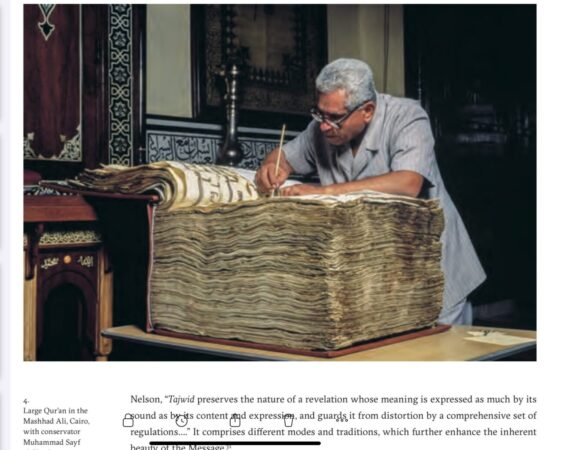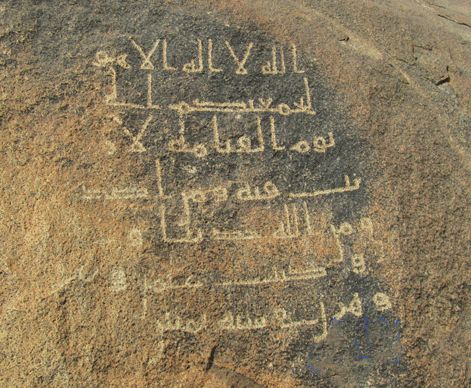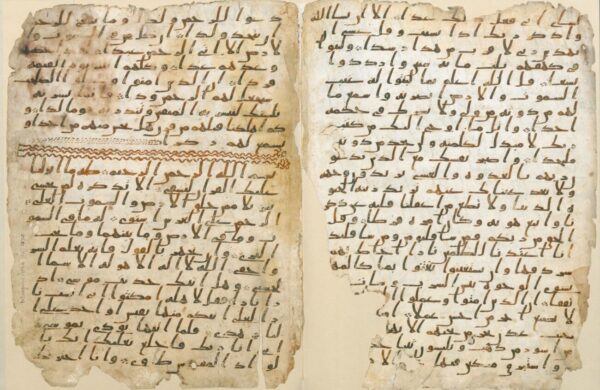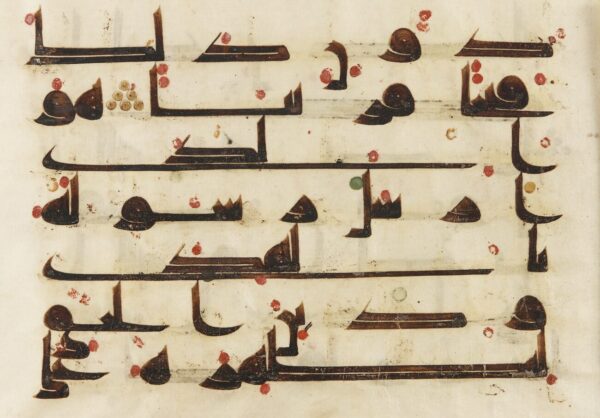- Kufic Script: The Incarnation of the Word
How, then, can we “watch and receive,” and truly comprehend the meaning of Kufi calligraphy? First of all, in pre-Islamic Arab societies, writing was a limited skill, primarily practiced within narrow circles. It was used mainly for commercial contracts, epitaphs, and occasionally for recording poetry. With the revelation of the Qur’an, however, writing underwent a qualitative transformation. Soon after the death of prophet, the imperative to preserve and disseminate the divine message necessitated the standardization and refinement of the script.
Why Kufi calligraphy is so important and what is its aesthetic value? First and foremost, there was no developed Arabic script during the Prophet’s era, whether its origins lay in Nabataean script, Lakhmid script, or Syriac influence. It was certainly a distant relative, perhaps the last descendant, of the Phoenician alphabet. That script was not a full alphabet but an abjad. This means it primarily indicates only the consonants of words. Moreover, even with 28 consonants, only 18 had distinct sign symbols. The remaining consonants would later be indicated by the addition of different points, but even during the time of Uthman, these points were absent. The remaining letters were written with the same signs, later in Umayyad Era these same looking letters differentiated by the addition of dots. So, the script evolved sufficiently to write Arabic only during the era of Abd al-Malik ibn Marwan. *7

Yet Kufic script stands as the oldest and most significant style of Arabic script, indeed the most formative visual art of Islam. So profound was its influence that Islamic civilization itself became a civilization of scripture, a Kufic calligraphy civilization. In Christianity, Jesus is regarded as an incarnation of God, sometimes phrased as the Son of God or the Word of God. Similarly, Kufic calligraphy can be seen as the incarnation of the Word of God. This is because the Qur’an itself is considered the Word of God, intermittently revealed by Gabriel, and thus, Qur’anic verses could be regarded as excerpts from the heavenly guarded book of destiny, the Levh-i Mahfuz.
From its inception, it was not merely an ordinary script but a holy scripture of the mushaf (book), the sacred text of the Qur’an. Kufic calligraphy itself emerged and developed specifically because of the Qur’an. Arabic sources indicate that only about 30 individuals in Mecca possessed writing skills, and some of them were indeed employed by the Prophet as scribes of revelation. In fact, Arabs had a predominantly oral culture before the Qur’an and did not favor writing extensively; their literature consisted primarily of poetry, which was also preferred to be memorized and recited by heart. Consequently, no sufficiently developed Arabic script existed at that time. Even the word “Qur’an” itself means “recited aloud verses”; it refers not to a physical book but to a recitation, not yet compiled during the Prophet’s time, and primarily conveyed through memorization.

Qur`an on rock inscription
I will not delve into the detailed discussions about how the Qur’an was eventually compiled into a suhuf (collected surahs and verses between two covers, resembling a book) during the time of the first Caliph Abu Bakr.

Birmingham Qur`an Arabic Hijazi script. It is said to be one of the oldest manuscripts, and it dates back to sometime between 568 and 645 CE, that is, probably sometime during the life of Prophet Muhammad himself. *12
It was during the reign of Abd al-Malik ibn Marwan that some points and vowel signs were added to these letters to facilitate easier and more accurate reading. Therefore, if only a rudimentary Arabic script was rarely used during the Prophet’s time, and a fully developed Arabic script did not exist then, it implies that both the Arabic script and Arabic language grammar owe their development significantly to the imperative of writing the Qur’an. Subsequently, this script would come to be known as Kufic script.

